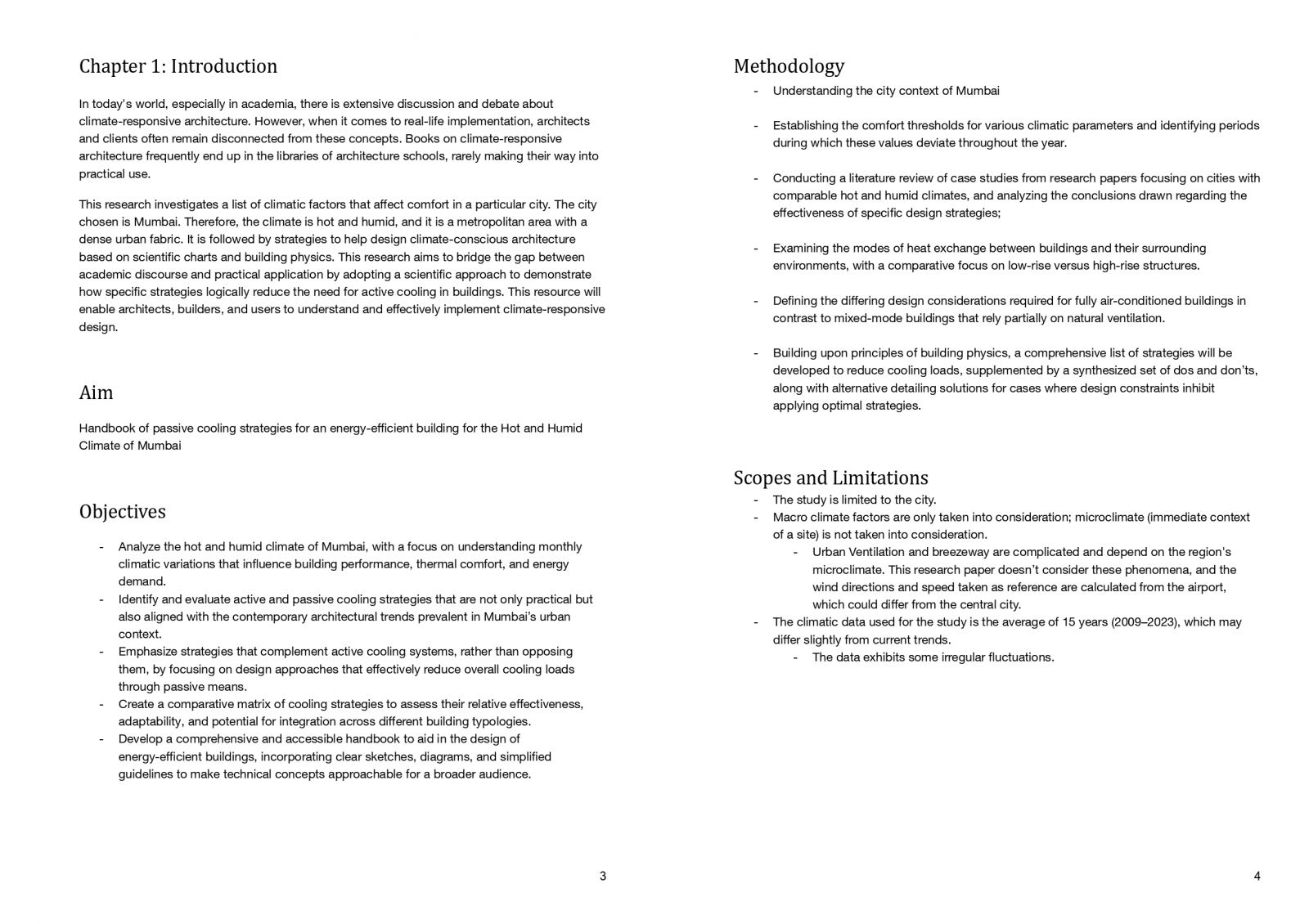Your browser is out-of-date!
For a richer surfing experience on our website, please update your browser. Update my browser now!
For a richer surfing experience on our website, please update your browser. Update my browser now!
In today's world, especially in academia, there is extensive discussion and debate about climate-responsive architecture. However, when it comes to real-life implementation, architects and clients often remain disconnected from these concepts. Books on climate-responsive architecture frequently end up in the libraries of architecture schools, rarely making their way into practical use. This research investigates a list of climatic factors that affect comfort in a particular city. The city chosen is Mumbai. Therefore, the climate is hot and humid, and it is a metropolitan area with a dense urban fabric. It is followed by strategies to help design climate-conscious architecture based on scientific charts and building physics. This research aims to bridge the gap between academic discourse and practical application by adopting a scientific approach to demonstrate how specific strategies logically reduce the need for active cooling in buildings. This resource will enable architects, builders, and users to understand and effectively implement climate-responsive design.
View Additional Work
